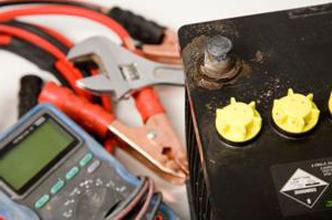What is a Li-Pol battery? His appointment
From year to year humanity makes the scientific and technological revolution more noticeableand more noticeable for ordinary people. With the growing number of electrical appliances, the need to store electric energy with the help of rechargeable batteries is also growing. And this is not surprising, because electricity is the basis of modern life.
What types of batteries are currently in use?
There are two types of mass produced batteries, which we can safely consider modern and relevant. These include lithium-polymer (Li-Pol battery) and lithium-ion (Li-Iol) production technologies. The main distinguishing feature of a lithium-polymer battery is that the electrolyte in it is not liquid, but combined, and contains a gel-like electrolyte.
The variability of the use of such batteries canbe the most diverse - from a smartphone for a smartphone, to smart energy storage systems for an autonomous house or a whole small electrical network. Tesla recently installed batteries for the night power supply of the whole island - Kauai. That's only for economic reasons, Tesla uses in its systems a lithium-ion battery, not a Li-Pol battery.
A Brief History of Lithium Batteries
Lithium, which is the basis of technology, wasis selected for development because of its unique chemical and physical characteristics: it has the maximum energy density, and it has a higher metal electrochemical potential than other available elements of the periodic table.
The first attempts to create a lithium battery werein the 1970s. But researchers have constantly pursued such problems as spontaneous combustion or strong heating. For these reasons, mass production of lithium batteries was not carried out for another twenty years. The problem was solved using the liquid electrolyte, but this created new problems. Such batteries were called lithium-ion, and had a high self-weight, which absolutely did not allow them to be introduced into thin devices for consumers.

The modern stage of technology development
The next insight for engineers wasthe use of solid polymer instead of electrolyte, which, incidentally, also was not without difficulties - the battery worked correctly only at a temperature of about 60 ° C. The solution to the problem was the transition to a gel-like polymer. This allowed us to work on the same energy parameters, but at temperatures that are much lower.

Li-Pol battery allows you to create batteries of arbitrary shapes and sizes. Suitable for use in fine electrical engineering and has a larger capacity than Li-Ion. For devices such as li pol batteries, charging takes time from several minutes to several hours. It depends on the capacity of the battery and the power of the charger.
The disadvantages of Li-Pol batteries can be attributedshort life cycle - they are prone to "aging" due to recharging cycles, they are more expensive than lithium-ion ones and require more complex charge controllers.
</ p>>





